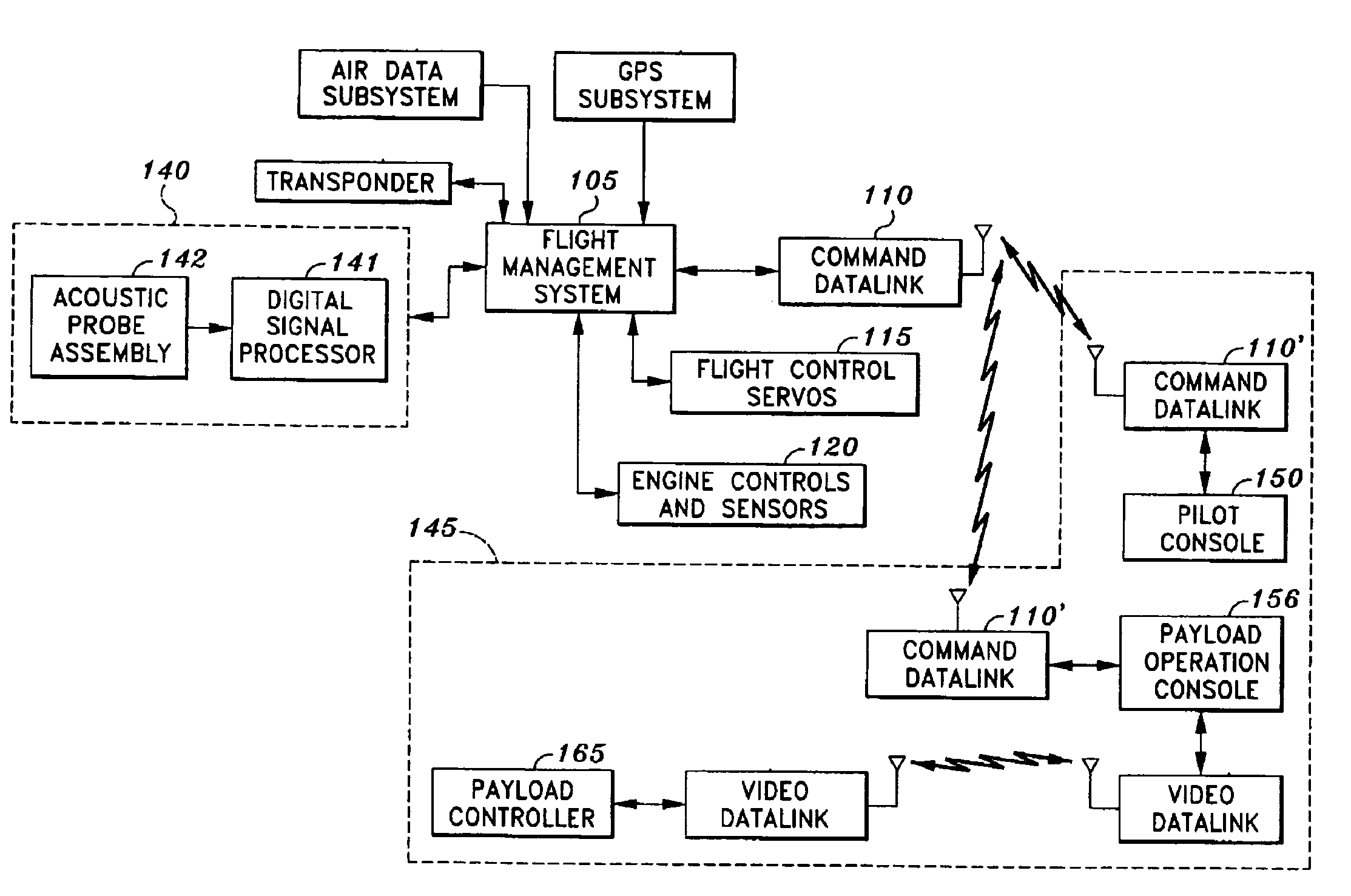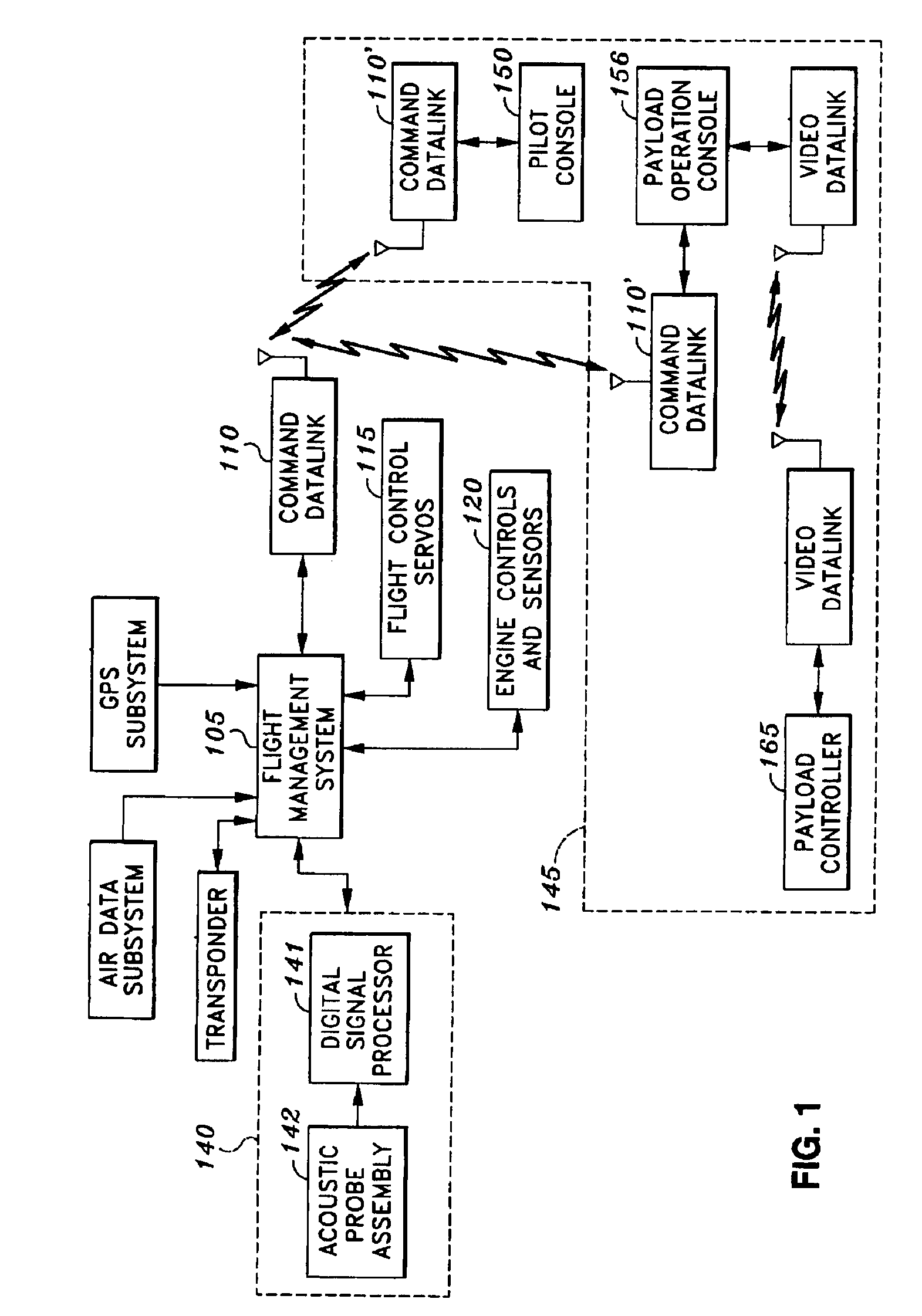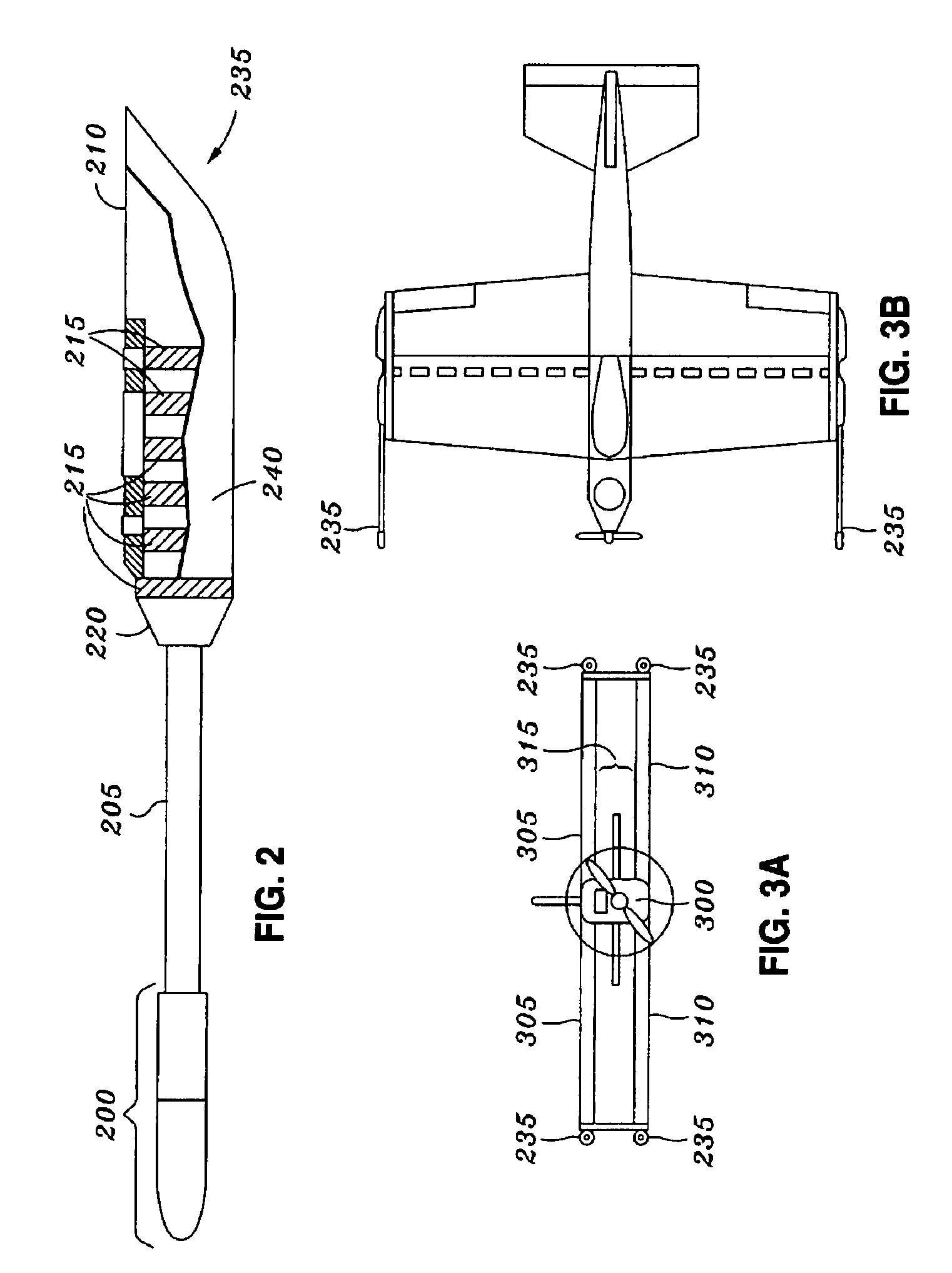Acoustic airspace collision detection system
a collision detection and airspace technology, applied in the direction of navigation instruments, instruments, using reradiation, etc., can solve the problems of limiting the use of uavs in the national airspace system (nas), affecting future civilian applications of uavs, and affecting the growth of the economy, etc., to achieve economic and compactness, remove the effect of platform vibration and wind nois
- Summary
- Abstract
- Description
- Claims
- Application Information
AI Technical Summary
Benefits of technology
Problems solved by technology
Method used
Image
Examples
Embodiment Construction
[0018]The detailed description set forth below is intended as a description of the presently preferred embodiment of the invention, and is not intended to represent the only form in which the present invention may be constructed or utilized. The description sets forth the functions and sequences of steps for constructing and operating the invention. It is to be understood, however, that the same or equivalent functions and sequences may be accomplished by different embodiments and that they are intended to be encompassed within the scope of the invention.
[0019]FIG. 1 is a block diagram of an exemplary integrated architecture that incorporates an acoustic collision detection system 140 into the architecture of an aircraft which is further in communication with a ground control center 145. Although FIG. 1 is directed to the incorporation of the acoustic collision detection system into a UAV, the system may be adapted for use in any type of aircraft, whether piloted or unmanned. A grou...
PUM
 Login to View More
Login to View More Abstract
Description
Claims
Application Information
 Login to View More
Login to View More - R&D
- Intellectual Property
- Life Sciences
- Materials
- Tech Scout
- Unparalleled Data Quality
- Higher Quality Content
- 60% Fewer Hallucinations
Browse by: Latest US Patents, China's latest patents, Technical Efficacy Thesaurus, Application Domain, Technology Topic, Popular Technical Reports.
© 2025 PatSnap. All rights reserved.Legal|Privacy policy|Modern Slavery Act Transparency Statement|Sitemap|About US| Contact US: help@patsnap.com



